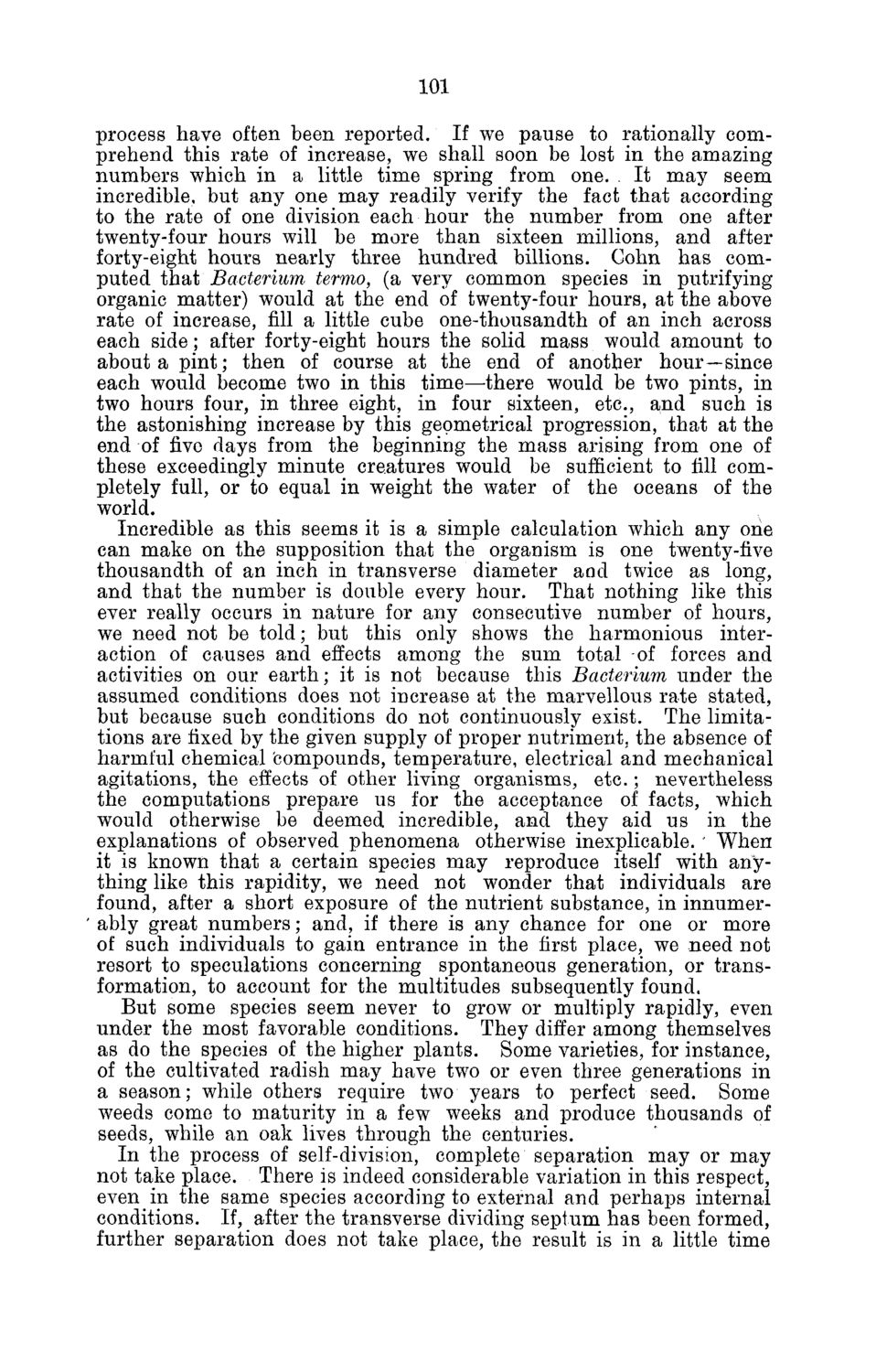| |
| |
Caption: Board of Trustees Minutes - 1882
This is a reduced-resolution page image for fast online browsing.

EXTRACTED TEXT FROM PAGE:
101 process have often been reported. If we pause to rationally comprehend this rate of increase, we shall soon be lost in the amazing numbers which in a little time spring from one. . It may seem incredible, but any one may readily verify the fact that according to the rate of one division each hour the number from one after twenty-four hours will be more than sixteen millions, and after forty-eight hours nearly three hundred billions. Cohn has computed that Bacterium termo, (a very common species in putrifying organic matter) would at the end of twenty-four hours, at the above rate of increase, fill a little cube one-thousandth of an inch across each side; after forty-eight hours the solid mass would amount to about a pint; then of course at the end of another hour—since each would become two in this time—there would be two pints, in two hours four, in three eight, in four sixteen, etc., and such is the astonishing increase by this geometrical progression, that at the end of five days from the beginning the mass arising from one of these exceedingly minute creatures would be sufficient to fill completely full, or to equal in weight the water of the oceans of the world. Incredible as this seems it is a simple calculation which any one can make on the supposition that the organism is one twenty-five thousandth of an inch in transverse diameter aod twice as long, and that the number is double every hour. That nothing like this ever really occurs in nature for any consecutive number of hours, we need not be told; but this only shows the harmonious interaction of causes and effects among the sum total of forces and activities on our earth; it is not because this Bacterium under the assumed conditions does not increase at the marvellous rate stated, but because such conditions do not continuously exist. The limitations are fixed by the given supply of proper nutriment, the absence of harmful chemical compounds, temperature, electrical and mechanical agitations, the effects of other living organisms, etc.; nevertheless the computations prepare us for the acceptance of facts, which would otherwise be deemed incredible, and they aid us in the explanations of observed phenomena otherwise inexplicable. ' When it is known that a certain species may reproduce itself with anything like this rapidity, we need not wonder that individuals are found, after a short exposure of the nutrient substance, in innumerably great numbers; and, if there is any chance for one or more of such individuals to gain entrance in the first place, we need not resort to speculations concerning spontaneous generation, or transformation, to account for the multitudes subsequently found. But some species seem never to growT or multiply rapidly, even under the most favorable conditions. They differ among themselves as do the species of the higher plants. Some varieties, for instance, of the cultivated radish may have two or even three generations in a season; while others require two years to perfect seed. Some weeds come to maturity in a few weeks and produce thousands of seeds, while an oak lives through the centuries. In the process of self-division, complete separation may or may not take place. There is indeed considerable variation in this respect, even in the same species according to external and perhaps internal conditions. If, after the transverse dividing septum has been formed, further separation does not take place, the result is in a little time
| |